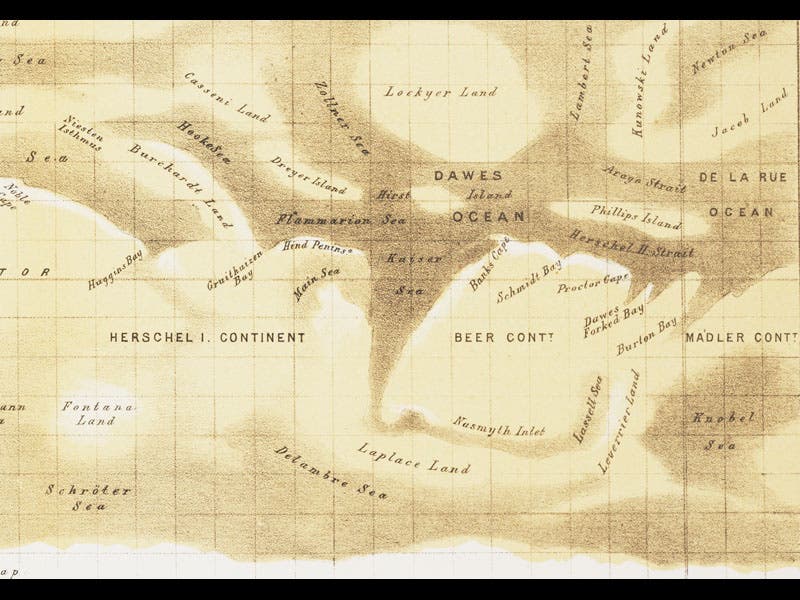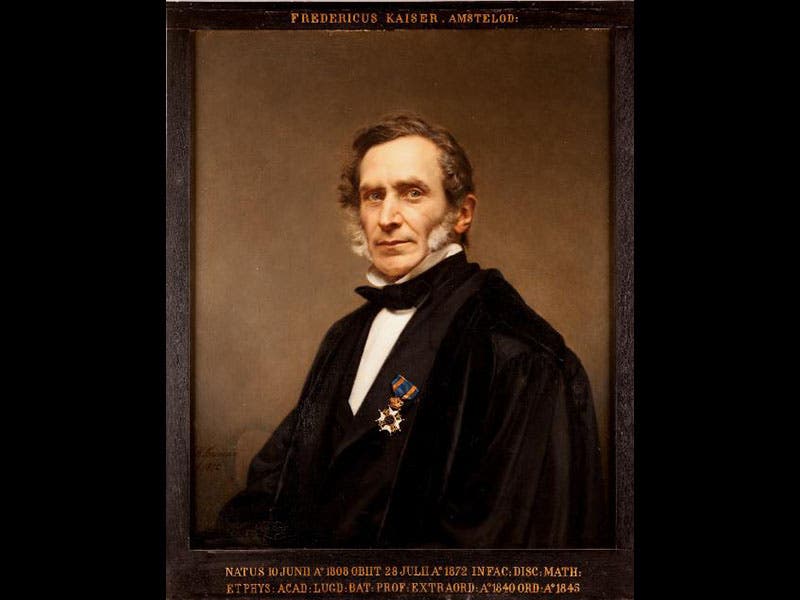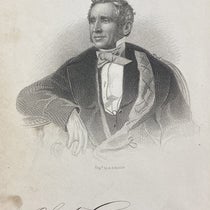Scientist of the Day - Frederik Kaiser



Frederik Kaiser, a Dutch astronomer, was born June 10, 1808. Kaiser was director of the Leiden Observatory, and in 1862, he began observing Mars with the observatory telescope. In 1862 and 1864, Mars was especially close to earth--astronomers call such situations "favorable oppositions"--which means the surface features on Mars were clearer than unusual, and many astronomers used the opportunity to study the red planet. Kaiser compared his drawings with those of Robert Hooke and Christian Huygens two centuries earlier, and he was able to calculate the exact length of a Martian day: 24 hours, 37 minutes, 22.6 seconds. So esteemed was Kaiser as an observer that when Robert Proctor in 1867 named all the features on Mars after astronomers, he called the most prominent feature the "Kaiser Sea." The first map of Mars above (first image) was drawn by Nathaniel Everett Green during the opposition of 1877 and published in 1879; the Kaiser Sea is at the right, looking like a fat tornado, and appearing even more prominent in a detail of that region (second image). It was called a "sea" because it was presumed, in the 1870s, that the dark features on Mars were water and the light areas were land.
Unfortunately for Kaiser, at the same time that Green compiled his map using Proctor's nomenclature, Giovanni Schiaparelli prepared his own Martian map using a different nomenclature of his own design, where the features on Mars were named using terms from classical Earth geography, and in his system, the Kaiser Sea became "Syrtis Major." The third image above is a detail from Schiaparelli's 1877 map--the same map that gave us our first glimpse of the Martian "canals"—and you can see Syrtis Major, formerly the Kaiser Sea, clearly labelled. The Schiaparelli system came to prevail and Proctor's nomenclature faded from use, which was too bad for Kaiser, for in modern photographs of Mars, the former Kaiser Sea is just about the most prominent feature you will see. In a view from the Hubble Space Telescope (fourth image), the large dark feature at lower center that looks like an inverted Africa is Syrtis Major. It could have been Kaiser’s greatest memorial. Instead, we have to settle for an oil portrait at Leiden University; fortunately, it is a nice one (fifth image).
Dr. William B. Ashworth, Jr., Consultant for the History of Science, Linda Hall Library and Associate Professor, Department of History, University of Missouri-Kansas City. Comments or corrections are welcome; please direct to ashworthw@umkc.edu.








